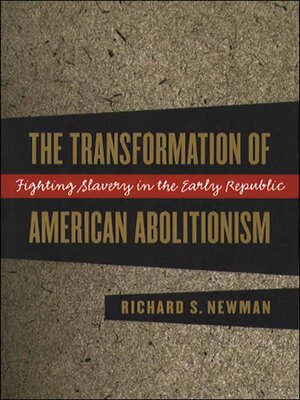The Transformation of American Abolitionism
ebook ∣ Fighting Slavery in the Early Republic
By Richard S. Newman

Sign up to save your library
With an OverDrive account, you can save your favorite libraries for at-a-glance information about availability. Find out more about OverDrive accounts.
Find this title in Libby, the library reading app by OverDrive.



Search for a digital library with this title
Title found at these libraries:
| Library Name | Distance |
|---|---|
| Loading... |
Most accounts date the birth of American abolitionism to 1831, when William Lloyd Garrison began publishing his radical antislavery newspaper, The Liberator. In fact, however, the abolition movement had been born with the American Republic. In the decades following the Revolution, abolitionists worked steadily to eliminate slavery and racial injustice, and their tactics and strategies constantly evolved. Tracing the development of the abolitionist movement from the 1770s to the 1830s, Richard Newman focuses particularly on its transformation from a conservative lobbying effort into a fiery grassroots reform cause.
What began in late-eighteenth-century Pennsylvania as an elite movement espousing gradual legal reform began to change in the 1820s as black activists, female reformers, and nonelite whites pushed their way into the antislavery movement. Located primarily in Massachusetts, these new reformers demanded immediate emancipation, and they revolutionized abolitionist strategies and tactics — lecturing extensively, publishing gripping accounts of life in bondage, and organizing on a grassroots level. Their attitudes and actions made the abolition movement the radical cause we view it as today.
What began in late-eighteenth-century Pennsylvania as an elite movement espousing gradual legal reform began to change in the 1820s as black activists, female reformers, and nonelite whites pushed their way into the antislavery movement. Located primarily in Massachusetts, these new reformers demanded immediate emancipation, and they revolutionized abolitionist strategies and tactics — lecturing extensively, publishing gripping accounts of life in bondage, and organizing on a grassroots level. Their attitudes and actions made the abolition movement the radical cause we view it as today.







